Announced during the October 1st Lately @ Lucid webinar, Lucid AI builds on our intelligent work acceleration platform to empower teams to create, collaborate, and maximize efficiency.
To access Lucid AI, open a Lucidchart document and navigate to the very top of the left-hand panel to open the chat.
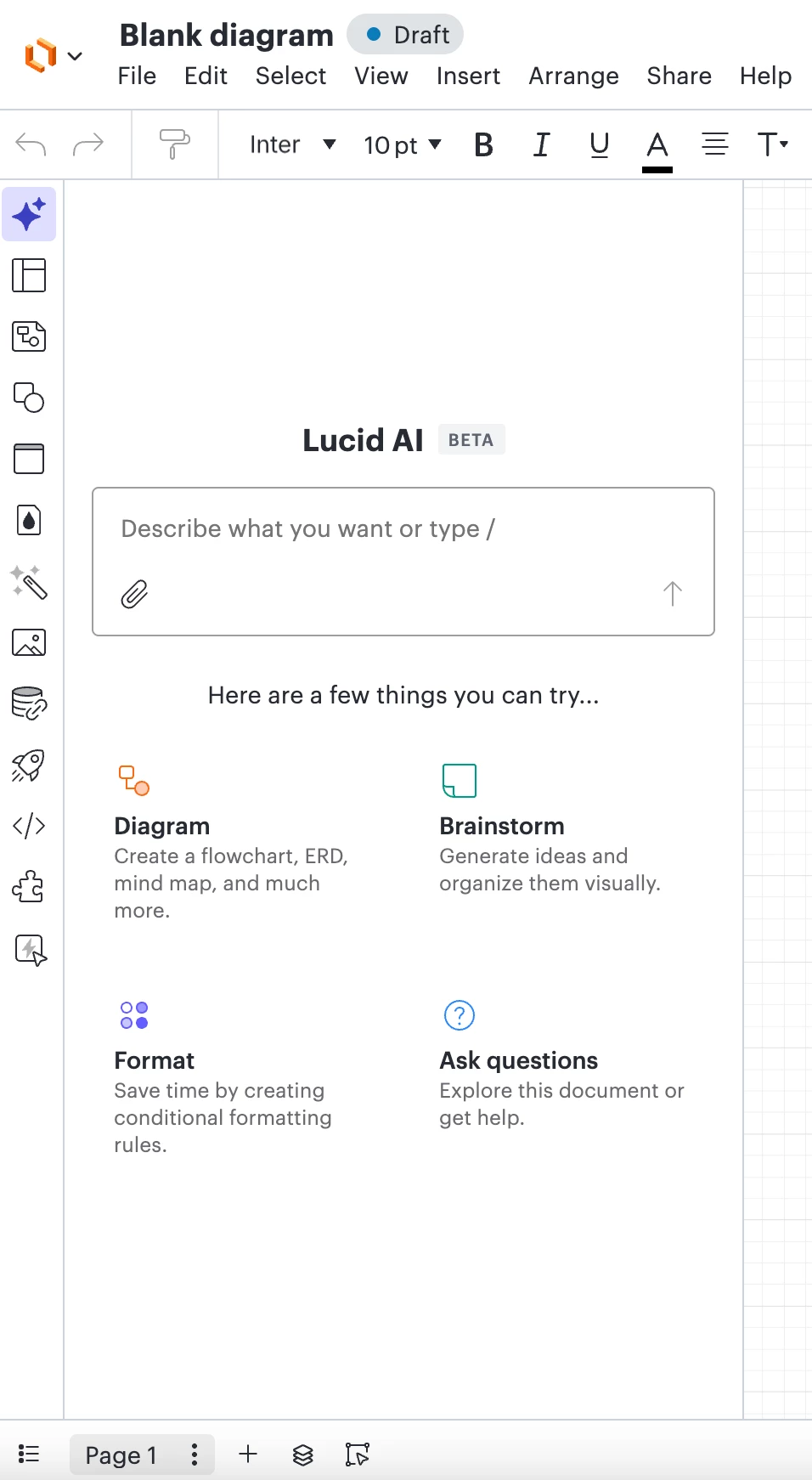
From within the Lucid AI chat, type in your prompt and start creating! Here are a few things that Lucid AI can help you with:
- Create a diagram: Supported diagram types include flowcharts, ERDs, mind maps, and more.
- Brainstorm: Easily generate and organize ideas.
- Apply conditional formatting: Save time and ask Lucid AI to create your conditional formatting rules.
- Ask questions: Ask Lucid AI questions about your document.
In this post, we’ll take a look at how Lucid AI could help with two different use cases!
Creating a starting point for diagramming with Lucid AI
First let’s look at creating an Entity Relationship Diagram (ERD) diagram for an online store. Starting with a prompt, Lucid AI can generate the diagram and populate it directly on the Lucidchart canvas, creating a starting point for the ERD diagram.
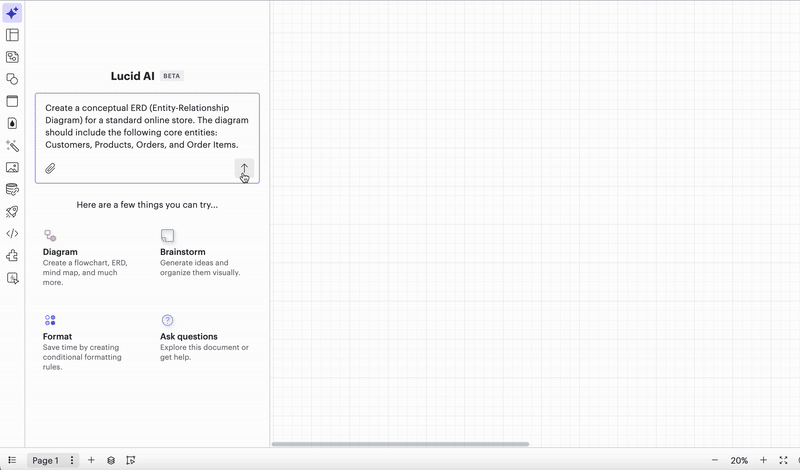
Edits to the diagram can be made manually or with additional prompts to Lucid AI. You can ask Lucid AI to change shapes, change relationships, expand on the diagram to include additional entities or attributes, and so much more.
You can easily add and edit conditional formatting rules from within Lucid AI. Note that Lucid AI does not support deleting conditional formatting rules entirely, and you will need to navigate to the conditional formatting panel to do so.
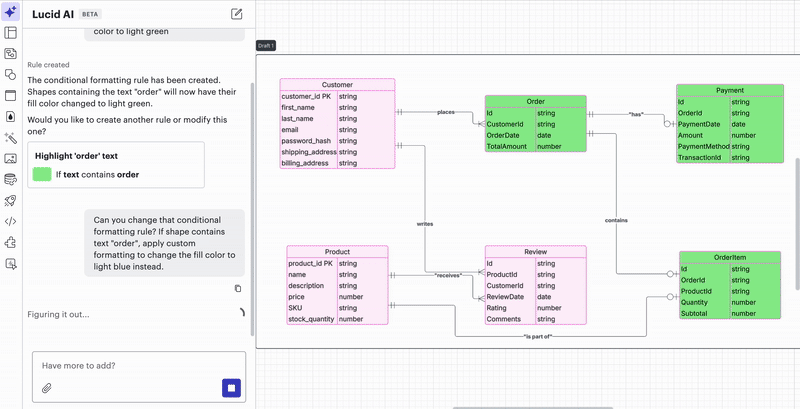
Ideation with Lucid AI
Now let’s take a look at how Lucid AI can help us generate ideas and create a plan of action. You can ask Lucid AI to brainstorm ideas for a fundraising event, for example, providing details on the objectives and goals to refine the suggestions. Don’t be afraid to ask for a new list or more details!
To provide additional context, you can upload a file for Lucid AI to use as additional context for your request. Supported file types include PDF, DOC, CSV, TXT, and images.
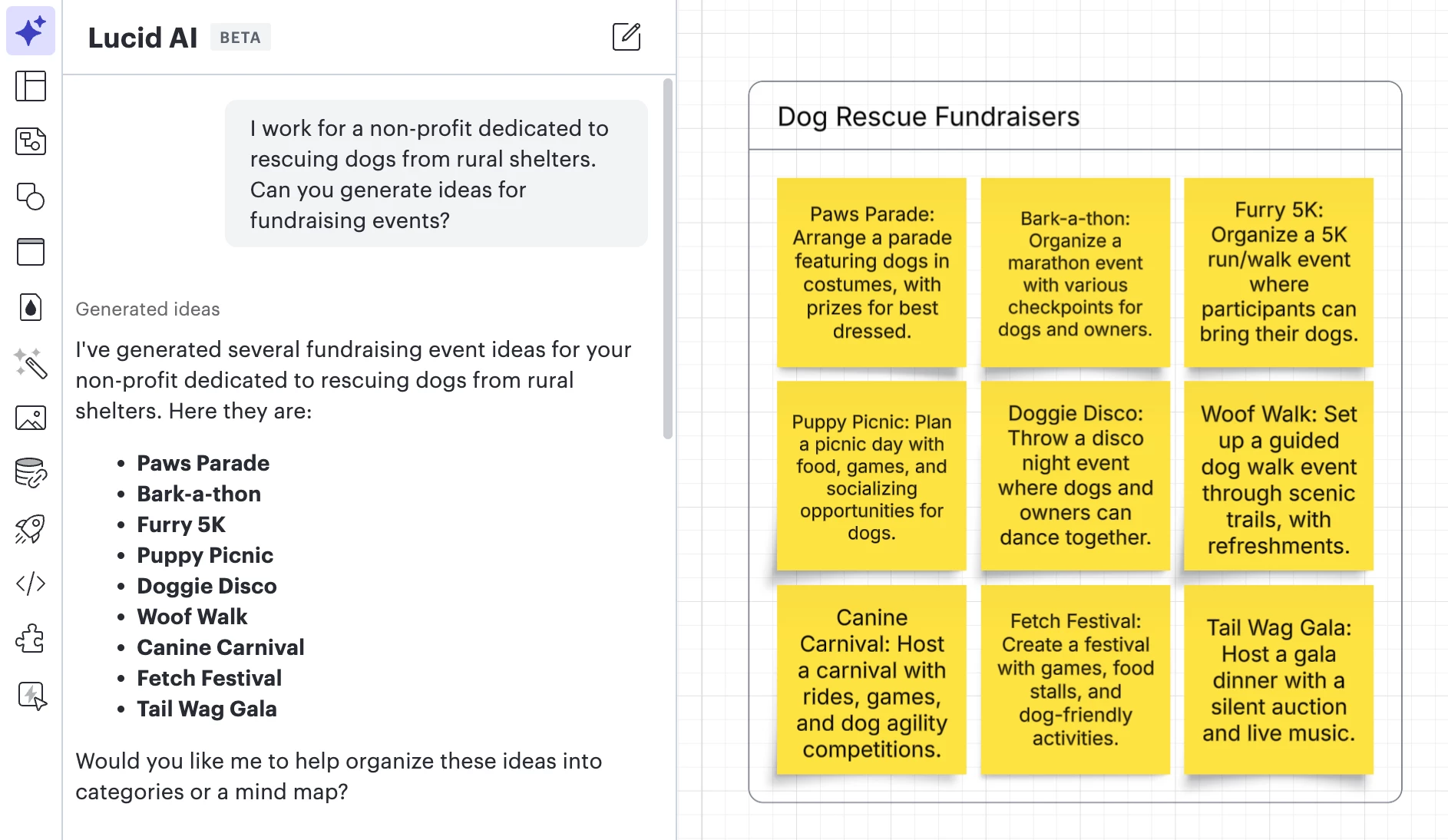
After ideas have been generated, Lucid AI can take that information and add it to a mind map diagram. This can help to organize ideas into categories, which Lucid AI can do automatically.
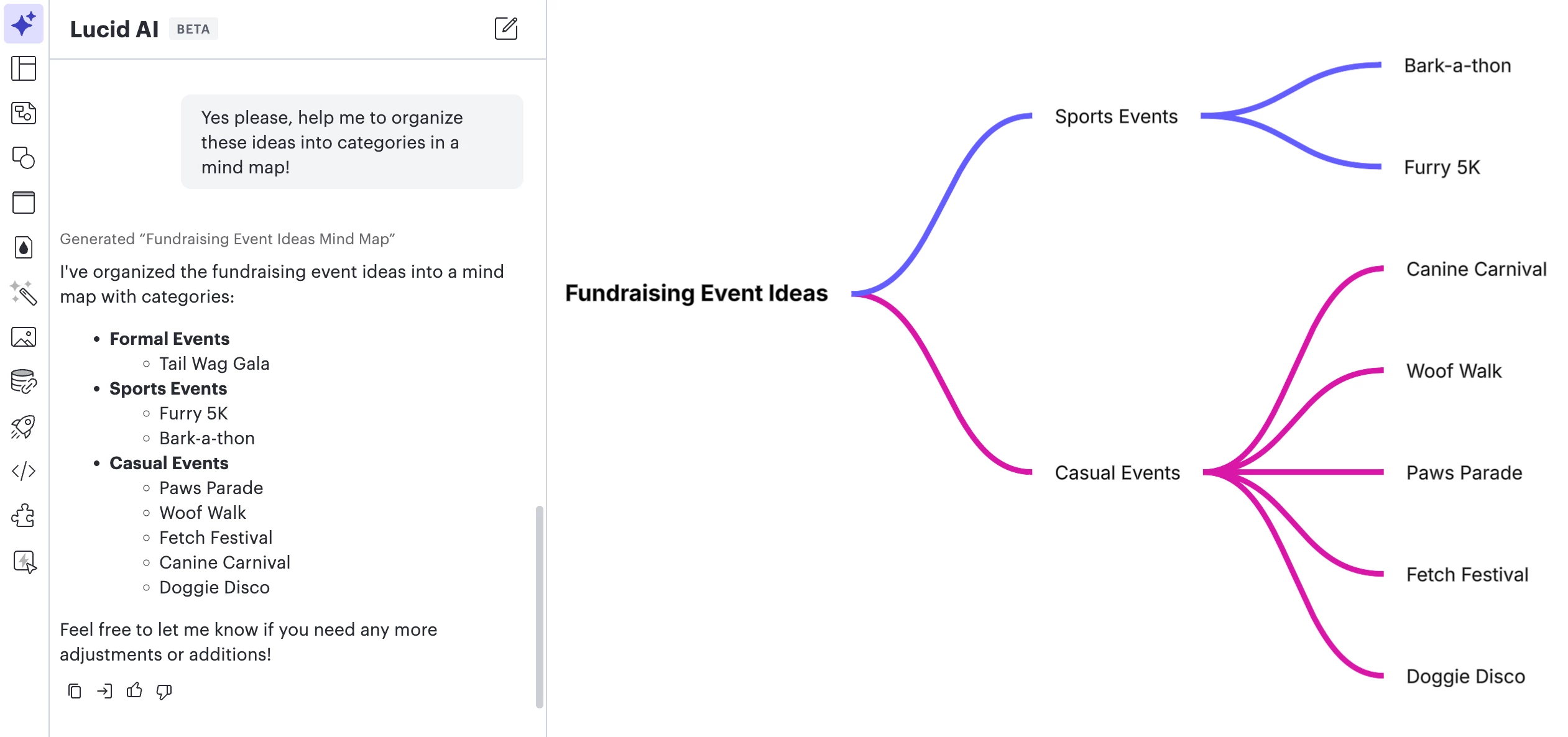
From here, you can expand on one idea in more detail. Lucid AI can generate a detailed flowchart of your next steps for planning your fundraising event.
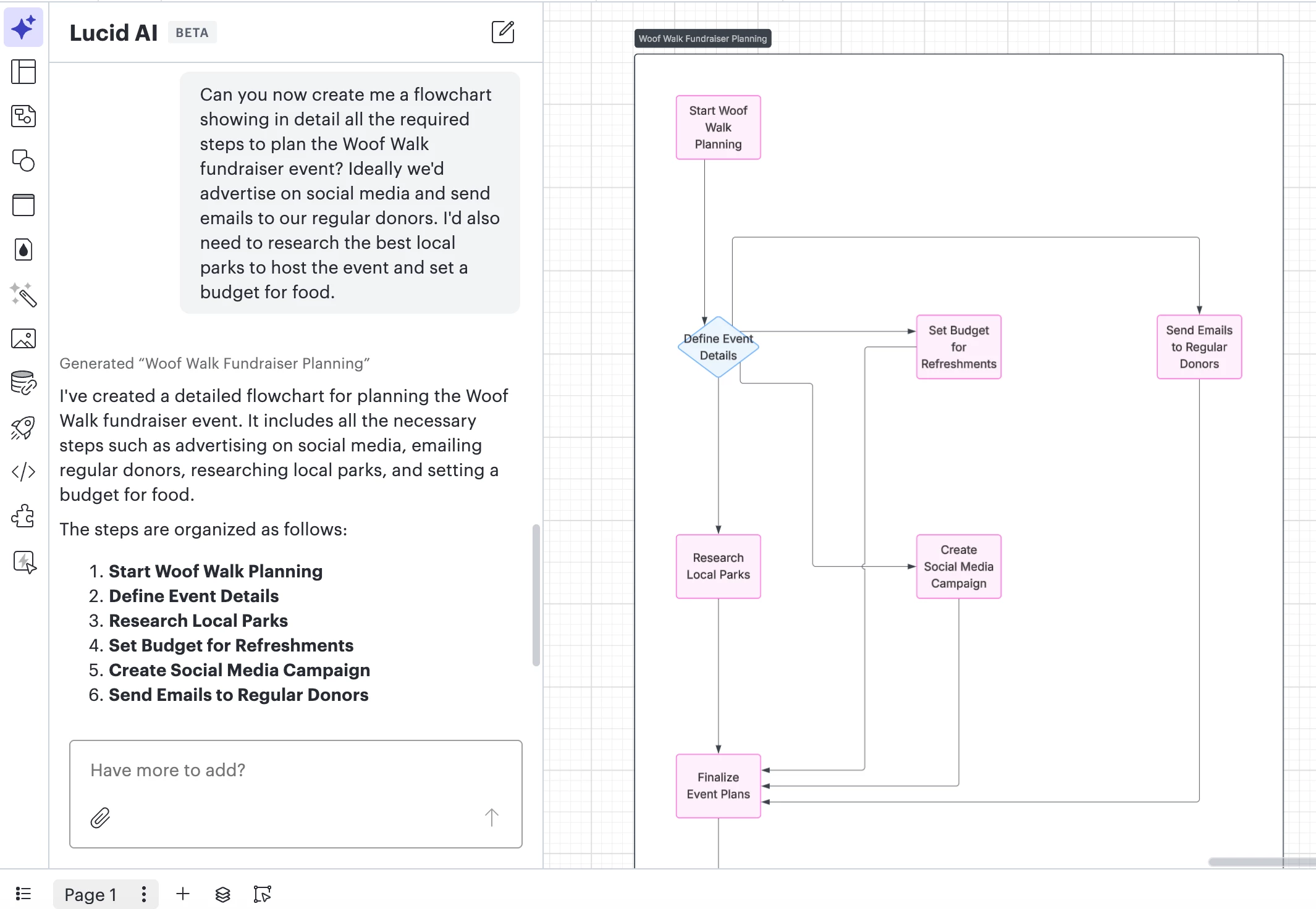
If you’re quickly browsing a large document, you can ask Lucid AI to summarize the board and insert an AI summary onto the canvas.
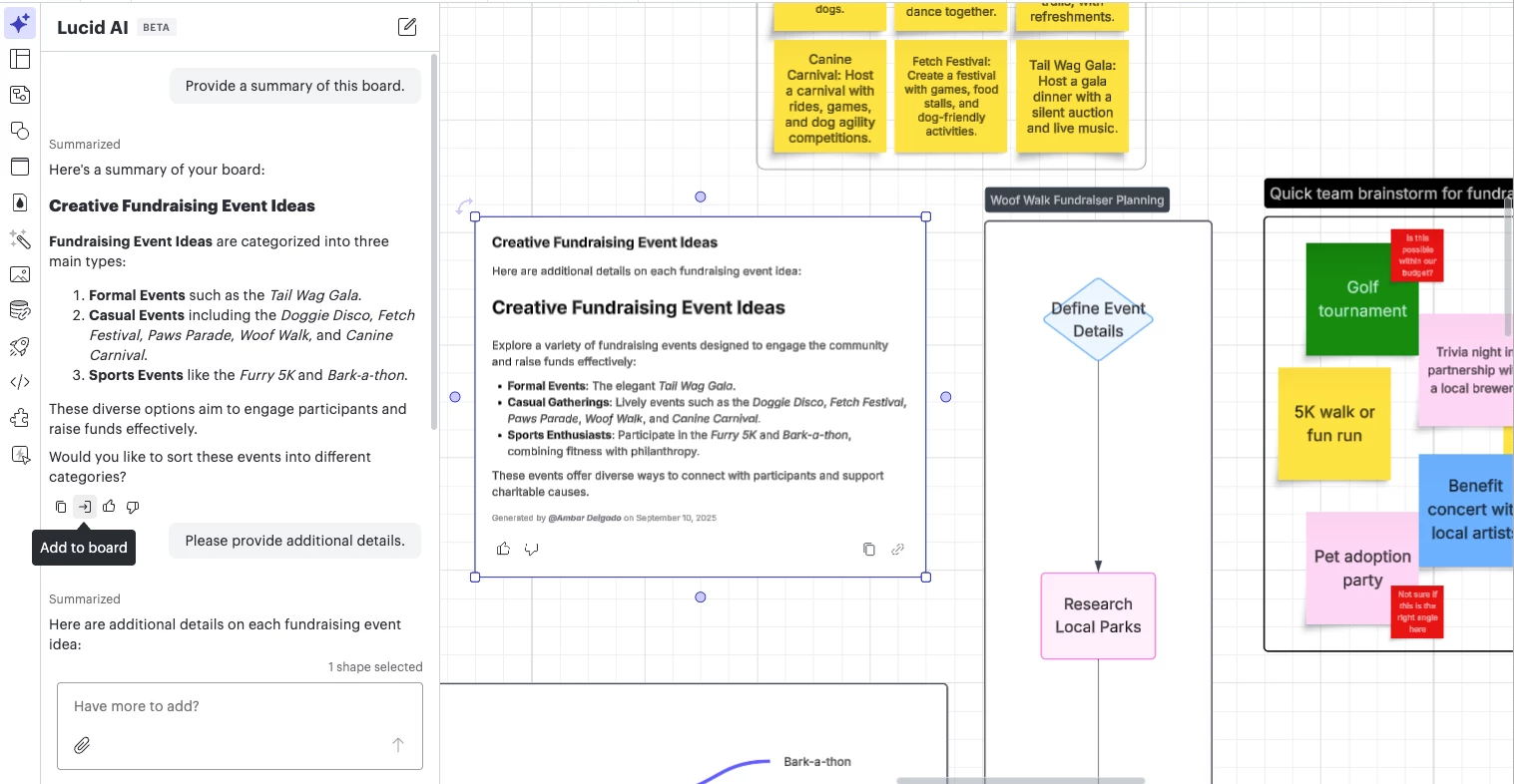
Now it’s your turn to try Lucid AI!
If you missed the Lately @ Lucid breakout session on Lucid AI, catch it here! For more information, check out this article.
